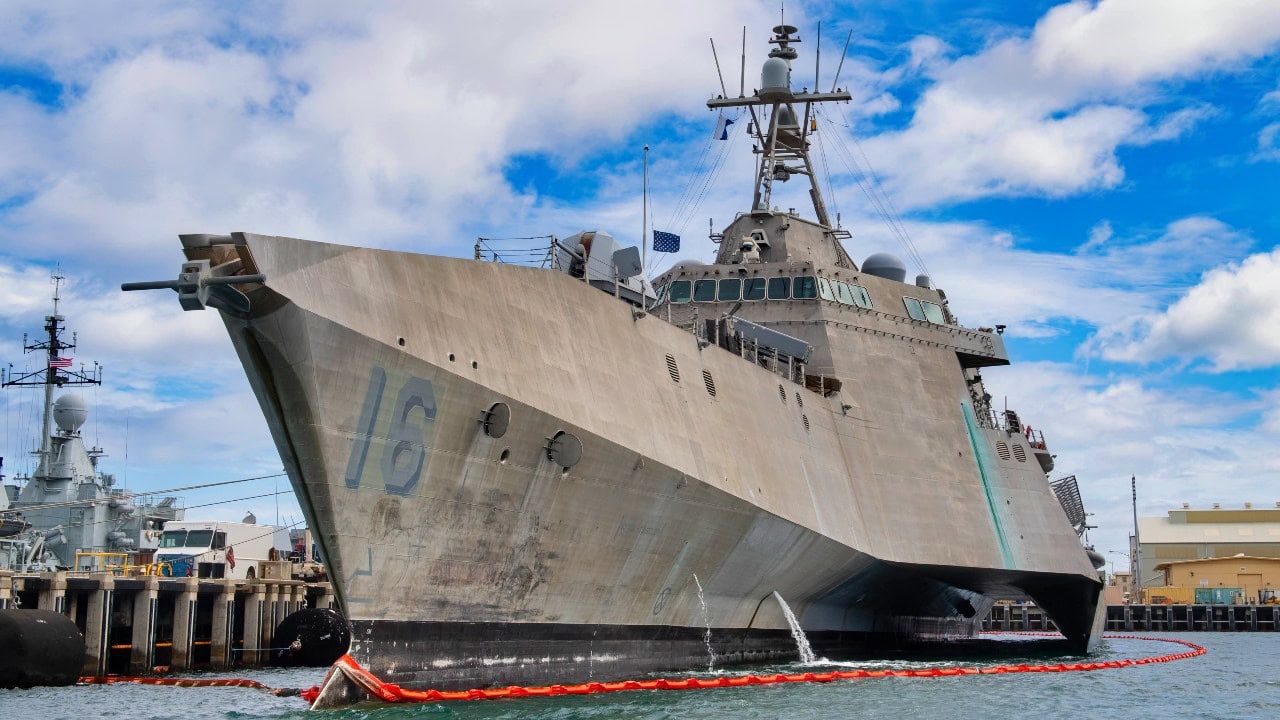According to a March 2025 report from the Washington, DC-based think-tank, the Center for Strategic and International Studies (CSIS), four of the People’s Republic of China’s (PRC) shipyards have built the equivalent of the entire UK Royal Navy (RN) between 2019-2023.
These four major facilities of their type—located at Dalian, Guangzhou, Jiangnan, and Hudong-Zhonghua—built 39 or more naval vessels during this period. Together, they are equal to 550,000 tons displacement.
Coincidentally, Dalian is the same shipyard where the Varyag aircraft carrier purchased from Ukraine was re-fitted, and the CV 16 Liaoning was re-christened and put out to sea for carrier trials.
Her sister ship, CV 17 Shandong, was also built in Dalian, while the first flattop carrier for the People’s Liberation Army Navy (PLAN), CV 18 Fujian, was constructed at Jiangnan.
The number of ships and their tonnage listed above is a greater flotilla than the RN’s battle force fleet of 19 surface ships and 10 submarines for a total displacement of 440,000 tons.
The CSIS document points out that Chinese shipyards now account for 53 percent of all vessels built worldwide—both military and commercial.
The PLAN fleet now has more ships than the entire US Navy—351 v. 294 US ships.
The US has more carriers, destroyers, and guided missile cruisers, but the bad news is the condition of much of the fleet—mainly deployed on blue water missions and away from port for months at a time—is aging.
China State Shipbuilding Corporation, one of the PRC’s major defense-industrial conglomerates, is described in the report as “at the heart of this transformation” and has 35 shipyards under its corporate umbrella.
Maintaining the Fleet
According to a January 31, 2025, report from the US Government Accountability Office (GAO), the US Navy will require significant activity and funding to keep these ships operational and in service for more extended periods than initially envisioned when they were first commissioned.
“The Navy has struggled to effectively maintain its combat surface ships,” reads the report.
“Our prior reports identified shortages of spare parts and trained personnel, postponed maintenance, and more.
“The US Navy operates 149 non-nuclear combat surface ships—cruisers, destroyers, the littoral combat ships, and amphibious assault ships. These ships account for roughly two-thirds of the Navy’s battle force and require timely maintenance to ensure they are available when needed.”
These ships are also the bulk of the surface fleet and, as more than one recently retired naval officer told 19FortyFive, there are no realistic plans to reverse these trends and “prevent a longer-term availability or force level crisis.”
Balance of Power
One of the significant concerns that this dramatic increase in Chinese shipbuilding creates is that in a time of conflict, these shipyards would be capable of replacing ships lost in combat much more rapidly than the US or any of its allies.
This presents what the CSIS document characterizes as a “concerning challenge to deterrence.”
The CSIS conclusions are that the situation is potentially combustible in that with such a growing superiority in shipbuilding, the Communist Party leadership in Beijing “may calculate that China’s vastly greater ability to mobilize its shipbuilding ecosystem to surge production or restore and replace sunk and damaged vessels would allow it to continue a conflict to victory despite heavy losses.
“Even short of all-out war, this disparity could alter Beijing’s risk perceptions and shift escalation dynamics in unpredictable ways. Addressing this disparity is thus as much about preventing a war as it is about winning one.”
Today, the US is only one percent of global shipbuilding, Japan 13 percent, and South Korea 29 percent.
“For the US to present a credible counter to the PRC is going to require some far more pronounced cooperation in shipbuilding with these and other allies,” said the same retired naval officer.
US Navy: A Photo Essay
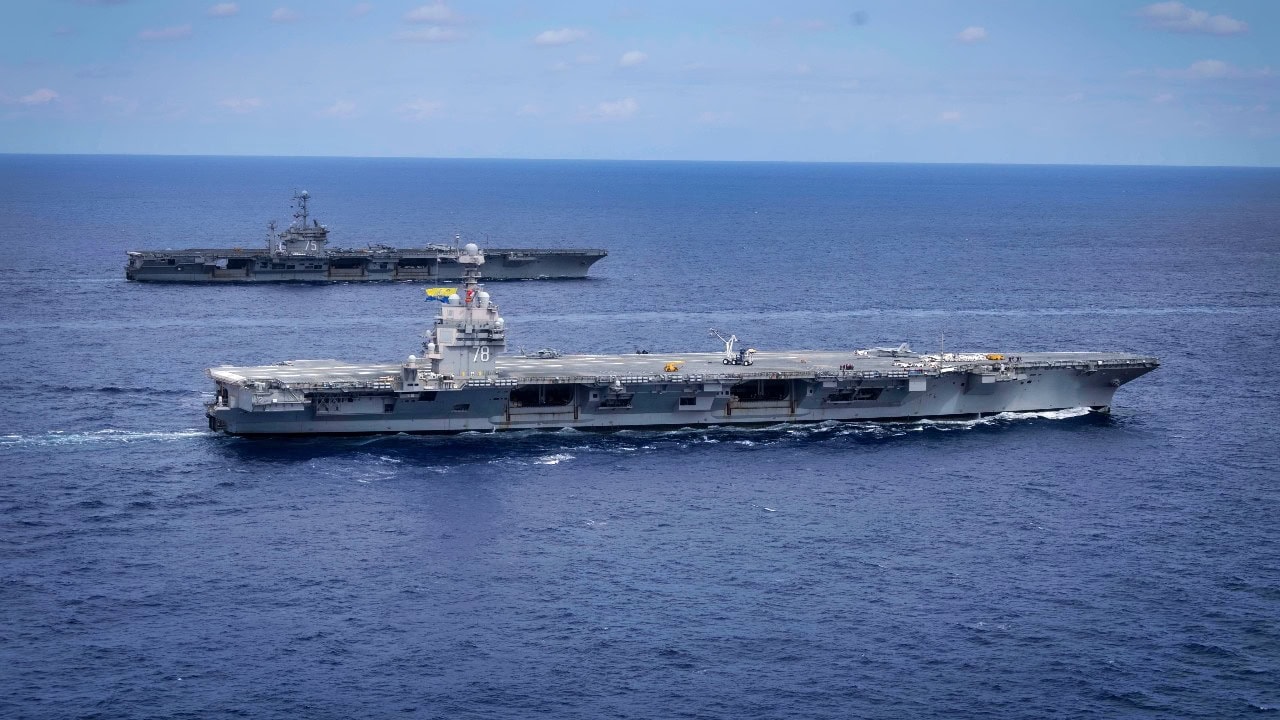
ATLANTIC OCEAN. (Aug. 24, 2024) The Nimitz-class aircraft carriers USS Harry S. Truman (CVN 75), back, and the world’s largest aircraft carrier, USS Gerald R. Ford (CVN 78), sail in formation in the Atlantic Ocean, Aug. 24, 2024. USS Gerald R. Ford is the flagship of the Gerald R. Ford Carrier Strike Group. The aircraft carrier is underway in the Atlantic Ocean to further develop core unit capabilities and skills such as fuels certification and ammunition on-load during its basic phase of the optimized fleet response plan. (U.S. Navy photo by Mass Communication Specialist 2nd Class Maxwell Orlosky).
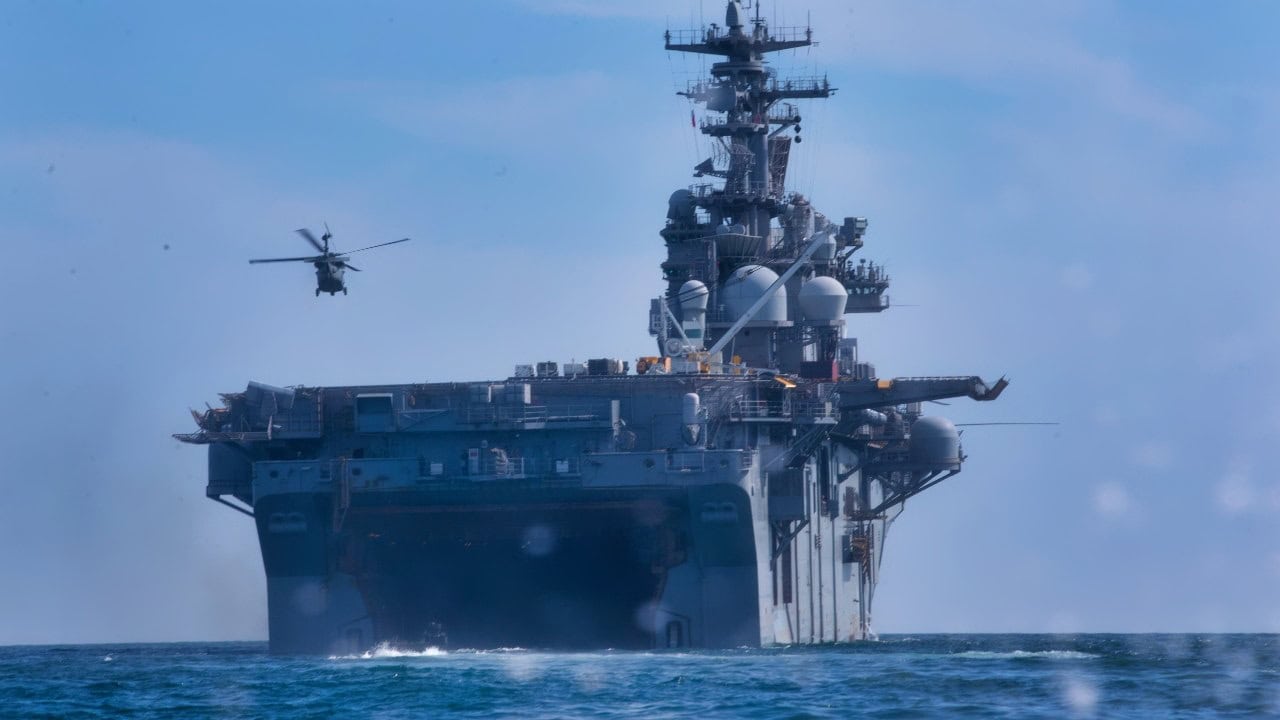
U.S. Marines with Bravo Company, 2d Assault Amphibious Battalion, 2d Marine Division approach the USS Wasp (LHD 1) in assault amphibious vehicles off of Onslow Beach during a three-day ship-to-shore exercise on Camp Lejeune, N.C., June 27, 2020. During the exercise, the Marines conducted amphibious maneuvers and dynamic ship-to-shore operations with the USS Wasp (LHD 1). (U.S. Marine Corps photo by Lance Cpl. Jacqueline Parsons)
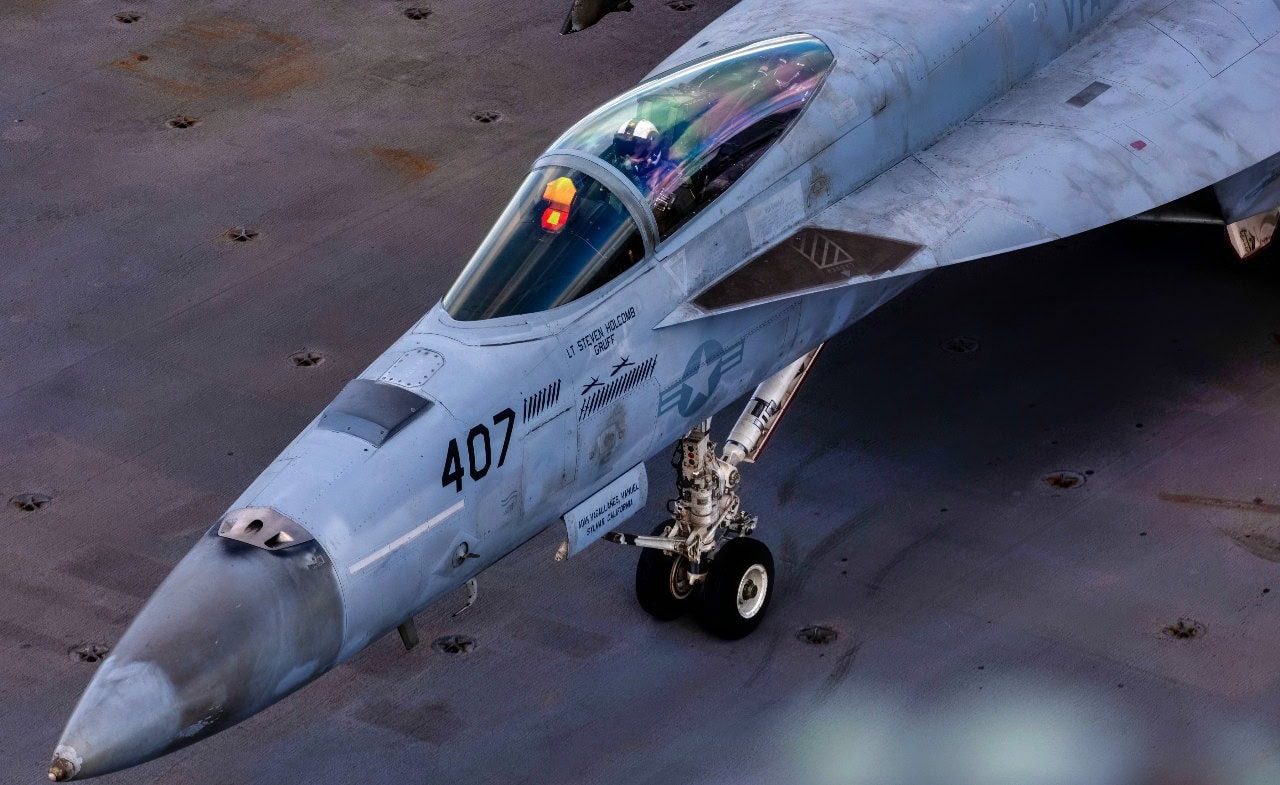
(Dec. 7, 2024) LT Steven Holcomb, attached to the Gunslingers of Strike Fighter Squadron (VFA) 105, operates a F/A-18E Super Hornet on the flight deck during flight operations, Dec. 7, 2024. USS George H.W. Bush is in the basic phase of the Optimized Fleet Response Plan conducting flight deck certification.(U.S. Navy photo by Mass Communication Specialist Seaman Jayden Brown)
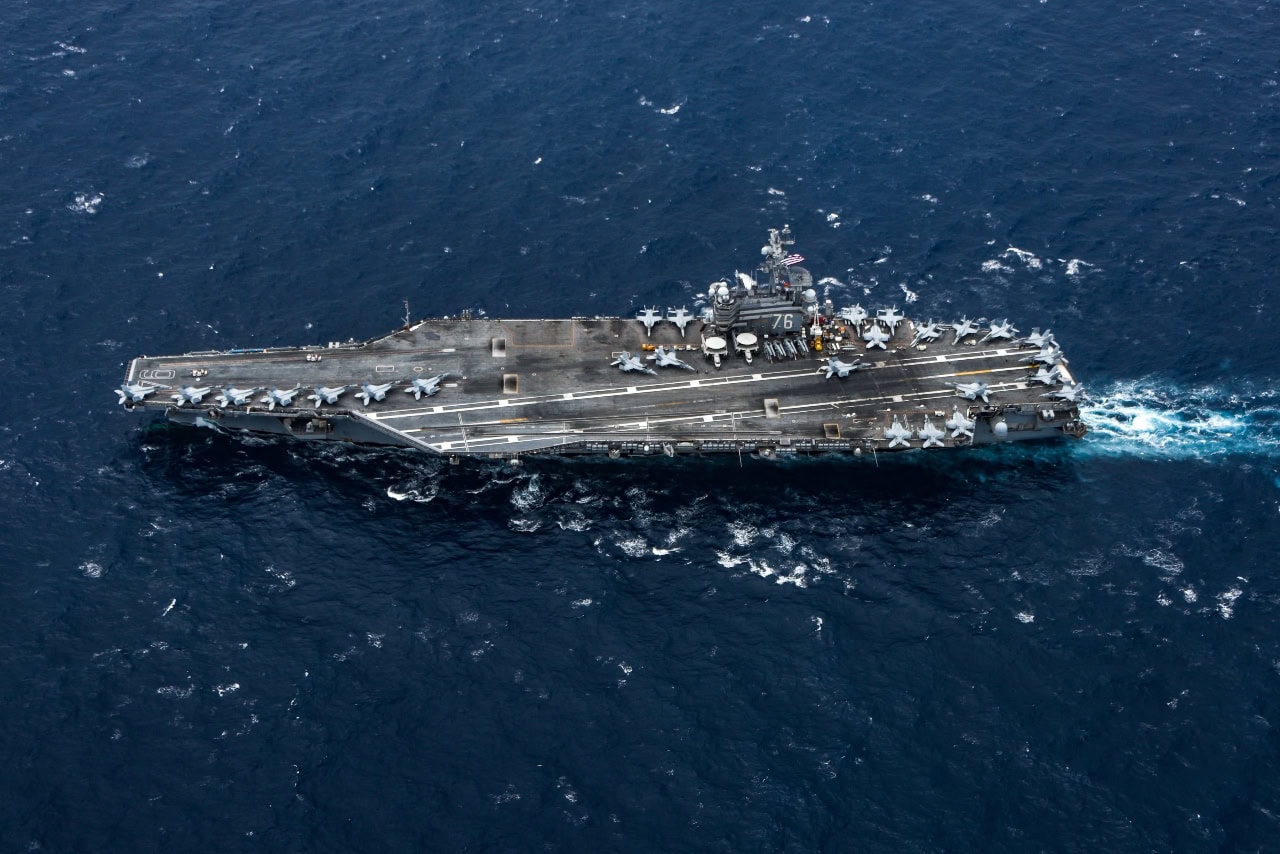
210624-N-BR419-1091 INDIAN OCEAN (June 24, 2021) The U.S. Navy’s only forward-deployed aircraft carrier, USS Ronald Reagan (CVN 76), steams in the Indian Ocean. Ronald Reagan, the flagship of Carrier Strike Group 5, provides a combat-ready force that protects and defends the United States, as well as the collective maritime interests of its allies and partners in the Indo-Pacific region. (U.S. Navy photo by Mass Communication Specialist Seaman Oswald Felix Jr.)
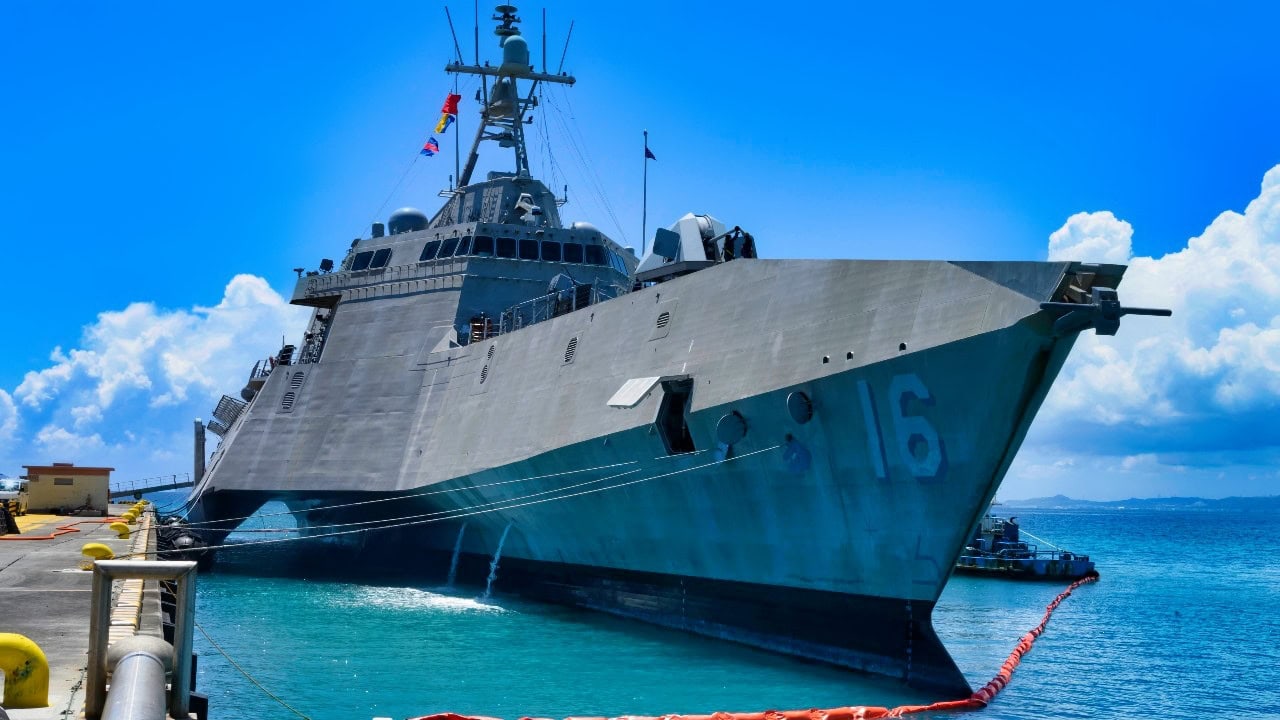
(Sept. 2, 2021) Independence-variant littoral combat ship USS Tulsa (LCS 16) sits pierside at Commander, Fleet Activities Okinawa White Beach Naval Facility, Okinawa, Japan, Sept. 2, 2021. Tulsa conducted a brief stop for resupply at CFAO White Beach Naval Facility. Tulsa, part of Destroyer Squadron Seven, is on a rotational deployment in the U.S. 7th Fleet area of operation to enhance interoperability with partners and serve as a ready-response force in support of a free and open Indo-Pacific region. (U.S. Navy photo by Mass Communication Specialist 1st Class David Krigbaum)
Summary and Key Points:
Reuben F. Johnson is a survivor of the February 2022 Russian invasion of Ukraine and is now an Expert on Foreign Military Affairs with the Fundacja im. Kazimierza Pułaskiego in Warsaw. He has been a consultant to the Pentagon, several NATO governments and the Australian government in the fields of defense technology and weapon systems design. Over the past 30 years he has resided in and reported from Russia, Ukraine, Poland, Brazil, the People’s Republic of China and Australia.

